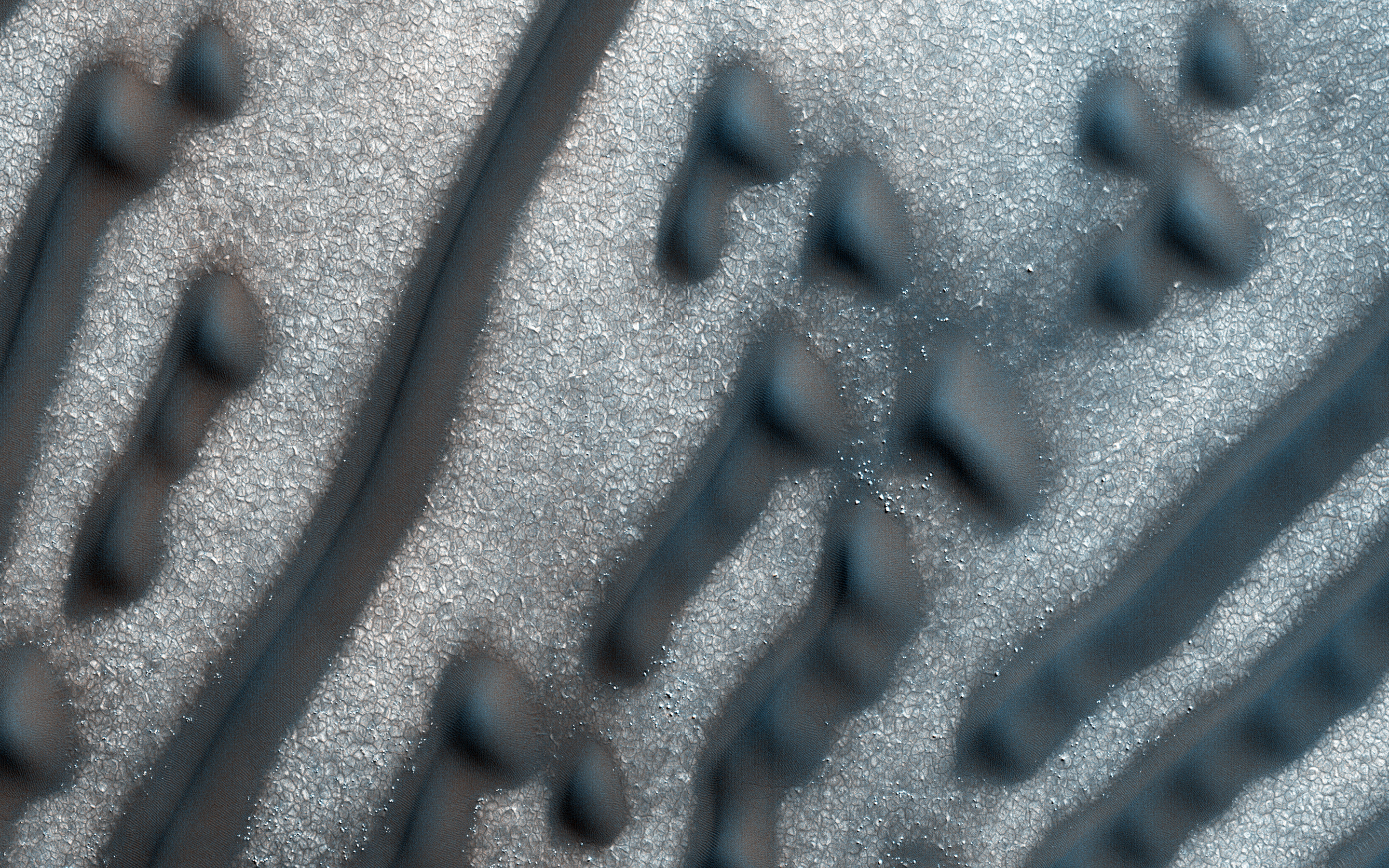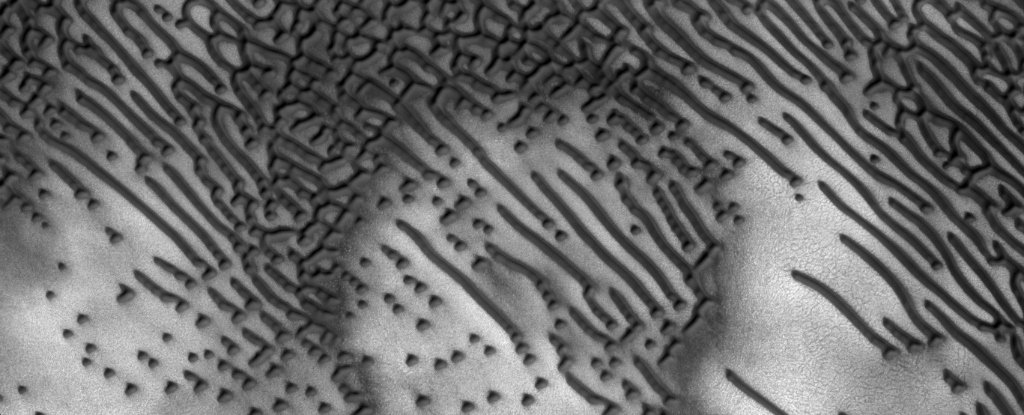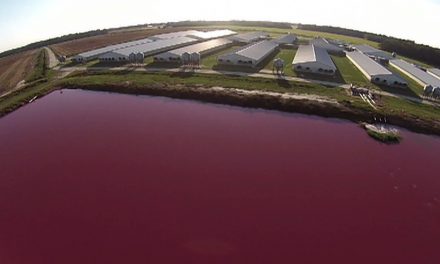I’m happy to report that while this story might seem nuts, it was NASA that made the discovery. Read on!
Recently, NASA spotted a series of strange, dark dunes on Mars that look a lot like the dots and dashes that make up Morse code. While this isn’t the first time researchers have spotted this pattern in the sands of Mars, they now have a clearer view which is allowing them to translate the message. Now, before everyone goes crazy, this message is NATURALLY formed- just like the dunes here on Earth (the dots and dashes of the dunes were carved out by the direction of the wind).
But, what makes the pattern on Mars so prominent is that it’s found inside a natural circular depression where there is limited sand available to be pushed around by wind. The long ‘dashes’ are formed by bi-directional winds (wind that’s travelling at right angles to the dune).
If you look at the images below what you are seeing is the result of wind, over time, coming from both directions and funneled into long, dark lines. The dots are known as ‘barchanoid dunes’, and are a little more mysterious.
Geophysicists believe they’re formed when something interrupts the production of the linear dunes – but NASA still isn’t quite sure what that is; figuring out that mystery is part of the reason they were photographing the region.
 NASA/JPL/University of Arizona
NASA/JPL/University of Arizona
From the article:
“These images were taken by the High Resolution Imaging Science Experiment (HiRISE) camera, which is on board the Mars Reconnaissance Orbiter, which has been photographing the Red Planet for the past decade.
With more observation, geophysicists are hoping that they’ll be able to figure out more about how the dunes on the surface of Mars form, and what that can tell us about the potential habitability of the planet.”
So, without further ado, I give you the message from the sands of Mars, translated by NASA planetary scientist Veronica Bray:
NEE NED ZB 6TNN DEIBEDH SIEFI EBEEE SSIEI ESEE SEEE !!
As you can see- no deep messages for the humans of earth. BUT, being able to read the sands of Mars could one day help us better understand life on the surface of our potential future outpost, so it’s worth paying attention.
Source: Science Alert












